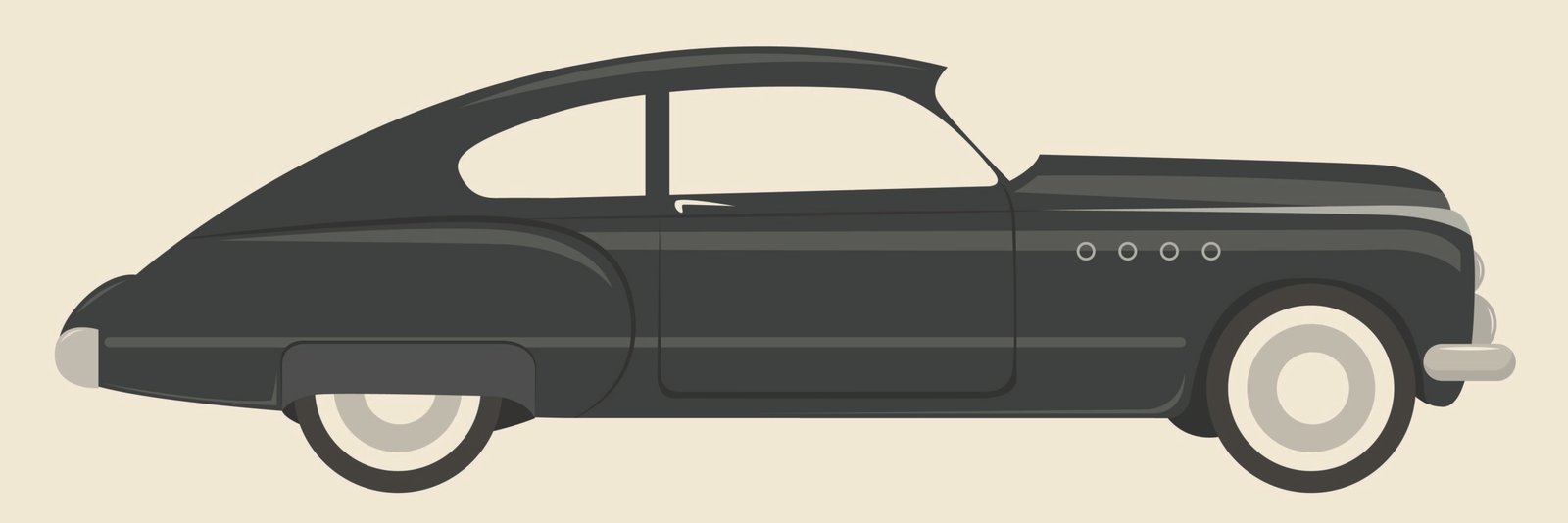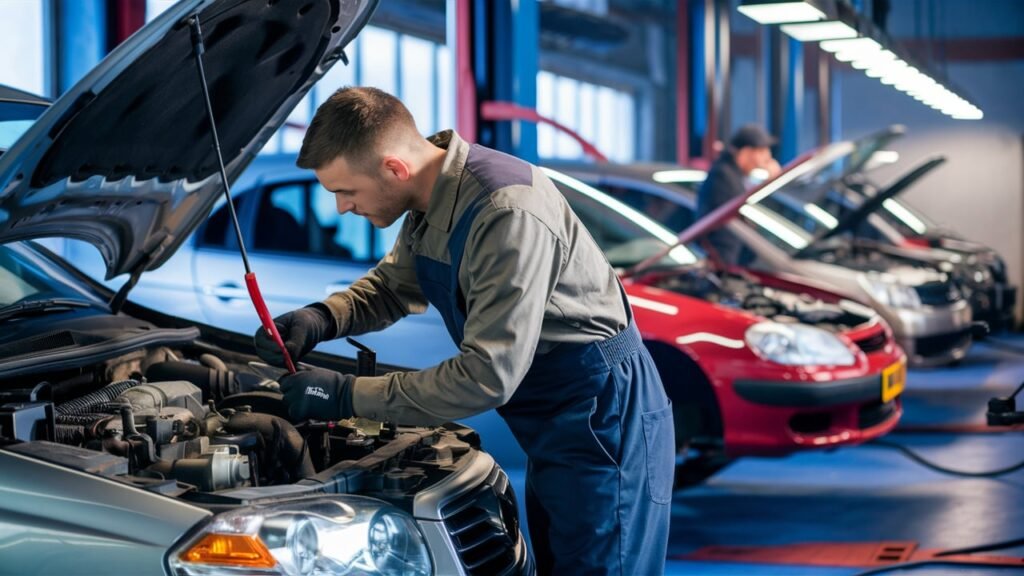
8 Signs Your Brake Pads Need Replacement
Within your vehicle’s intricate framework lies a crucial element that ensures your safety on the roads: brake pads. Engineered to translate your foot’s pressure into deceleration, these unassuming components play a pivotal role in halting your car’s momentum.
Regular examination and timely replacement of brake pads become paramount tasks, safeguarding not only optimal braking performance but also the integrity of your driving experience.
Embarking on a journey towards understanding the signs indicating failing brake pads opens a realm of insight into vehicular mechanics. By comprehending the subtle hints that herald potential pad deterioration, you empower yourself with foresight and prudence in maintaining roadworthiness.
Navigating through the nuances of squeals, vibrations, diminished responsiveness, and visual cues ushers you into a realm where automotive proficiency intertwines with vigilant care for your vehicle’s well-being.
Delve deeper into this spectrum; discover the telltale indicators urging you to attend promptly to this vital aspect of automotive maintenance. Explore how recognizing these signs acts as an ally in preserving both efficiency and security during your drives.
Sign 1: Squealing Noise.
One of the most common signs that your brake pads need replacement is the unmistakable high-pitched squealing noise that occurs when braking. Picture this: you’re cruising down the highway, and as you gently press on the brake pedal, a piercing sound cuts through the serenity of your drive.
This shrill warning is not just an annoyance; it’s a vital alert from your vehicle’s built-in wear indicators informing you that your brake pads have worn thin and are due for replacement. This noise serves as a proactive reminder to address the worn-out pads promptly before they compromise your safety on the road.
Imagine driving through city streets, coming to a stop at a traffic light, only to be greeted by the screeching sound of metal on metal when you depress the brake pedal. It’s like nails on a chalkboard—unpleasant and concerning.
As brakes typically produce friction when in use, this abrasive noise during braking indicates that your brake pads have reached their minimum thickness and are now making direct contact with the rotors.

Ignoring this audible warning could lead to extensive rotor damage and escalated repair costs if left unattended. Therefore, once you hear this telltale squeal, scheduling a prompt brake pad replacement is essential to maintain optimal braking function.
Let’s say you’re navigating winding roads in rural areas amid scenic landscapes when every time you tap on the brakes approaching a bend, an intrusive squeaking soundtrack accompanies your driving experience. This consistent noise during braking acts as an auditory signal that should not be underestimated.
It reveals that your brake pads’ material has significantly diminished, endangering both your stopping power and overall driving safety. Thinking ahead and being responsive to these audible cues can prevent potential brake failures and ensure smooth deceleration while maneuvering through varying terrains—highlighting why addressing squealing noises promptly with new brake pads is critical for safe motoring.
Sign 2: Vibrations While Braking.
When driving and applying the brakes, feeling vibrations through the steering wheel or brake pedal can be a telltale sign of potential brake pad issues. These vibrations, known as brake pulsation, are often indicative of uneven wear on the brake pads.
Imagine cruising down the road and, as you gently press on the brake pedal, you sense an unexpected shudder running through your steering wheel; this experience can signal worn-out or compromised brake pads. Brake pulsation can impact not only your driving comfort but also the overall efficiency of your vehicle’s braking system.
Imagine a scenario where you’re approaching a stop sign at moderate speed and decide to slow down by gently engaging the brakes. Instead of smooth deceleration, you notice a jittery sensation that travels up from your foot on the brake pedal to your hands gripping the steering wheel.

This sensation is more than just an inconvenience—it could be pointing towards an urgent need for brake pad replacement. In such situations, prompt attention is crucial to address any underlying issues with the components responsible for ensuring safe braking performance.
Considering a situation where every time you come to a stoplight, you feel like there’s a subtle dance happening beneath your feet—a rhythmic vibration that wasn’t present before. Such occurrences are not normal and should not be ignored.
To maintain optimal safety while driving, recognizing these indicators of potential worn or damaged brake pads becomes paramount. By understanding how vibrations during braking correlate with brake pad condition, you can proactively address any necessary maintenance tasks and ensure your brakes function effectively when needed most.
Sign 3: Reduced Brake Responsiveness.
When your vehicle’s brake pads wear down, you might experience a noticeable decrease in brake responsiveness. Imagine cruising down the highway and encountering unexpected traffic ahead. You instinctively press the brake pedal, but there’s a split-second delay before your car begins to decelerate.
This delayed reaction can be a telltale sign of worn brake pads compromising the effectiveness of the braking system. With reduced friction between thinning brake pads and the rotors, your vehicle may struggle to stop promptly when needed.
To further illustrate this point, picture navigating through winding roads with numerous sharp turns that require frequent braking. As you attempt to round a bend and gently tap the brakes to adjust your speed, you sense that your car isn’t slowing down as swiftly as usual.
This phenomenon can be attributed to worn-out brake pads struggling to generate sufficient friction against the rotors. The diminished stopping power poses a safety hazard by increasing stopping distances, which could lead to potential accidents if not addressed promptly.

Additionally, think about how reduced brake responsiveness might manifest in city driving scenarios where quick stops are common at intersections or in heavy traffic conditions. When approaching a red light or encountering pedestrian crossings, having full confidence in your brakes’ immediate response is crucial for ensuring smooth and safe deceleration.
Any lag in braking performance due to worn brake pads can jeopardize your ability to react swiftly to sudden changes in traffic flow, underscoring the importance of proactive maintenance checks and timely replacement of brake pads.
Sign 4: Visual Inspection Reveals Thin Pads.
Performing a visual inspection of your brake pads is a straightforward yet critical step in determining their condition. When peering through the spokes of your wheels, take note of the thickness of the brake pads. If they appear noticeably thinner compared to brand-new pads, it’s a clear sign that replacement is necessary.
This thinning occurs as the friction material on the brake pads wears down over time from normal use. Neglecting this warning sign can lead to compromised braking performance and safety risks while driving.
Consider this scenario: during a routine tire rotation, you decide to inspect your brake pads out of curiosity. Upon closer examination, you notice that the brake pads have worn down significantly and are approaching the end of their lifespan.
In this situation, replacing the pads promptly is crucial to avoid potential damage to other components within the braking system. By staying vigilant and proactive in monitoring the thickness of your brake pads, you can maintain optimal braking efficiency and ensure a safe driving experience.

Imagine driving through congested city streets when suddenly encountering unexpected traffic ahead. As you apply gentle pressure on the brake pedal, you sense a delay in response before your vehicle comes to a halt.
This delayed stopping ability could stem from worn-out brake pads with reduced thickness, hampering their effectiveness in providing sufficient friction against the rotors.
By visually inspecting your brake pads regularly, you can catch early signs of wear and address them preemptively to prevent more severe issues down the road. Remember, maintaining healthy brake pads is not just about performance but also about ensuring your safety and that of others on the road.
Sign 5: Warning Light on Dashboard.
Modern cars are designed with advanced safety features, including dashboard warning lights that serve as a crucial indicator of potential issues within the braking system. When it comes to brake pads, a specific warning light related to brakes can signify deteriorating conditions of the brake pads themselves.
These dashboard alerts are programmed to detect abnormalities in the brake pad wear pattern or thickness, signaling the driver to address the situation promptly.
For instance, imagine you’re driving and suddenly notice a bright red exclamation mark illuminated on your dashboard. This alert is not something to be taken lightly; it could be indicating that your brake pads are nearing the end of their lifespan.
In such cases, it’s imperative not to ignore this warning but rather treat it as an urgent call to action. By responding promptly and having your brake pads inspected and replaced if necessary, you can prevent potential risks associated with compromised braking performance.

In certain models, vehicle-specific symbols may appear on the dashboard when brake pad wear reaches a critical level. The inclusion of such intuitive warning systems makes it easier for drivers to identify brake-related issues without being experts in automotive maintenance.
These visual cues help bridge the gap between car owners and technical diagnostics by providing direct feedback on components like brake pads, empowering individuals to take proactive measures towards ensuring road safety and optimal vehicle performance.
Therefore, if you ever see a warning light related to your brakes illuminate on your car’s dashboard, remember that this is more than just another notification—it’s a signal from your vehicle’s intricate system urging you to pay attention to your brake pads’ condition.
Responding promptly by seeking professional inspection and replacing worn-out brake pads when needed will not only enhance your driving experience but also prioritize safety for yourself and others sharing the road with you.
Sign 6: Burning Smell When Driving.
One of the unmistakable signs that your brake pads may require immediate replacement is a strong burning odor emanating from your vehicle, especially noticeable while driving or after applying brakes. This pungent smell often indicates overheated or excessively worn-out brake pads.
The issue stems from the compromised friction material on the brake pads rubbing against the rotors, generating heat and emitting a distinct burnt scent. If this symptom is ignored, it can lead to further damage to the braking system, making prompt attention crucial.
To provide an analogy, imagine holding two pieces of sandpaper together and vigorously rubbing them against each other for an extended period—inevitably, heat will build up, resulting in a burning smell as the materials break down.

Similarly, when thin or damaged brake pads press against the rotors with each application of the brakes, they generate excessive heat due to inadequate frictional contact. This thermal stress not only causes the burning odor but also compromises braking efficiency and safety.
When experiencing such a burning smell from your vehicle while driving, it’s essential to address this issue promptly by inspecting and potentially replacing your brake pads. By taking swift action to rectify this sign of brake pad deterioration, you are not only safeguarding your braking system’s functionality but also ensuring your overall driving safety.
Remember that neglecting this warning could escalate into more severe problems within the braking system, emphasizing the necessity of timely maintenance in preserving optimal vehicle performance.
Sign 7: Scratching Noises During Braking.
When you hear a high-pitched scratching or grinding noise emanating from your car as you come to a stop, it could be a telling sign that your brake pads are in dire need of replacement. These unpleasant sounds typically indicate that the brake pads have worn down significantly, allowing metal-to-metal contact between the brake pads and rotors during braking maneuvers.
As this friction increases, it can lead to severe rotor damage if left unaddressed. Imagine the importance of maintaining the integrity of these critical components—like ensuring proper padding during vital moments.
Consider an instance where every stoplight becomes an indicator of potential trouble brewing beneath your vehicle’s surface. Picture the significance of listening keenly to the sounds your car makes to prevent costly future repairs.
The awareness of recognizing abnormal noises and addressing them promptly is paramount in preserving both safety and financial wellness when it comes to automobile maintenance.

In the scenario where these grating noises are present each time you hit the brakes, envision avoiding further complications by seeking professional assistance or taking decisive action yourself.
Visualize stepping into action to mitigate potential risks associated with worn-out brake pads before they escalate into more substantial issues for both your vehicle’s braking system and your wallet.
Through vigilance and timely intervention, you safeguard not only your car’s optimal performance but also ensure a smooth driving experience devoid of jarring soundtracks echoing impending repairs.
Conclusion.
In conclusion, the signs indicating the need for brake pad replacement serve as crucial indicators to ensure the safety and optimal performance of your vehicle’s braking system. By recognizing and addressing these warning signals promptly, automotive enthusiasts, DIY car owners, mechanics, and car maintenance professionals can prevent potential hazards on the road.
Prioritizing regular inspection and proactive maintenance not only enhances driving safety but also contributes to extending the longevity of both brake pads and other components within the braking system.
Maintaining a keen awareness of the eight signs discussed in this article empowers individuals to take proactive steps towards ensuring that their brake pads remain in optimal condition.
Remember, timely replacement of worn-out brake pads is essential for efficient braking performance and overall driving safety. By staying attuned to these signs and promptly attending to any issues that arise with your brake pads, you can enjoy smoother rides while safeguarding yourself and others on the road.




